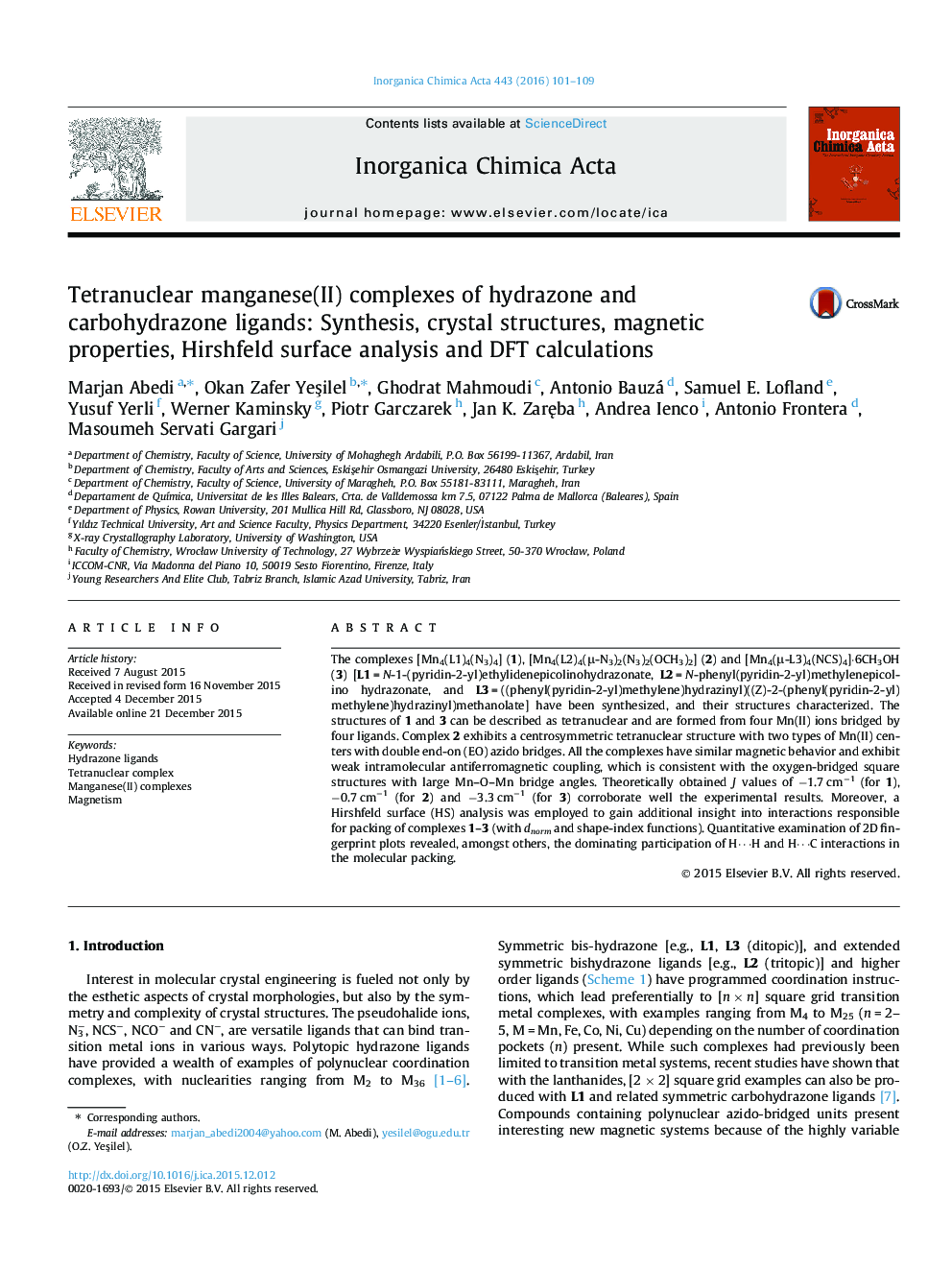| Article ID | Journal | Published Year | Pages | File Type |
|---|---|---|---|---|
| 1306424 | Inorganica Chimica Acta | 2016 | 9 Pages |
The complexes [Mn4(L1)4(N3)4] (1), [Mn4(L2)4(μ-N3)2(N3)2(OCH3)2] (2) and [Mn4(μ-L3)4(NCS)4]·6CH3OH (3) [L1 = N-1-(pyridin-2-yl)ethylidenepicolinohydrazonate, L2 = N-phenyl(pyridin-2-yl)methylenepicolino hydrazonate, and L3 = ((phenyl(pyridin-2-yl)methylene)hydrazinyl)((Z)-2-(phenyl(pyridin-2-yl)methylene)hydrazinyl)methanolate] have been synthesized, and their structures characterized. The structures of 1 and 3 can be described as tetranuclear and are formed from four Mn(II) ions bridged by four ligands. Complex 2 exhibits a centrosymmetric tetranuclear structure with two types of Mn(II) centers with double end-on (EO) azido bridges. All the complexes have similar magnetic behavior and exhibit weak intramolecular antiferromagnetic coupling, which is consistent with the oxygen-bridged square structures with large Mn–O–Mn bridge angles. Theoretically obtained J values of −1.7 cm−1 (for 1), −0.7 cm−1 (for 2) and −3.3 cm−1 (for 3) corroborate well the experimental results. Moreover, a Hirshfeld surface (HS) analysis was employed to gain additional insight into interactions responsible for packing of complexes 1–3 (with dnorm and shape-index functions). Quantitative examination of 2D fingerprint plots revealed, amongst others, the dominating participation of H⋯H and H⋯C interactions in the molecular packing.
Graphical abstractIn this study, three tetranuclear complexes, namely [Mn4(L1)4(N3)4] (1), [Mn4(L2)4(μ-N3)2(N3)2(OCH3)2] (2) and [Mn4(μ-L3)4(NCS)4]·6CH3OH (3)], have been synthesized, and their structures characterized. The structures of 1 and 3 can be described as tetranuclear formed from four Mn(II) ions bridged by four ligands. The complex 2 exhibits a centrosymmetric tetranuclear structure with two types of Mn(II) centers with double end-on (EO) azido bridges. All complexes have similar magnetic behavior and exhibit weak intramolecular antiferromagnetic coupling, which is consistent with the oxygen-bridged square structures with large Mn–O–Mn bridge angles. Hirshfeld surface (HS) analysis was employed to gain additional insight into interactions responsible for packing of complexes 1–3 (with dnorm and shape-index functions).Figure optionsDownload full-size imageDownload as PowerPoint slide
